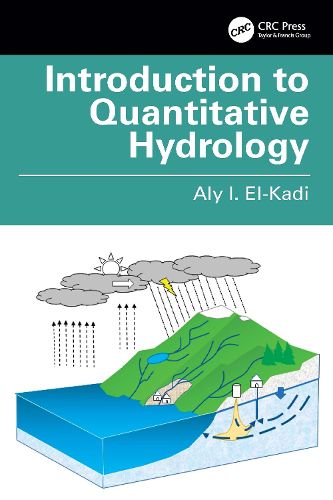Readings Newsletter
Become a Readings Member to make your shopping experience even easier.
Sign in or sign up for free!
You’re not far away from qualifying for FREE standard shipping within Australia
You’ve qualified for FREE standard shipping within Australia
The cart is loading…






This textbook serves as an introductory quantitative course on the fundamental elements of the hydraulic cycle. It further enhances students' understanding by discussing the latest advancements in hydrological science, covering both experimental and computational techniques.
The textbook is self-contained, requiring no prior knowledge, and includes numerous illustrations to clarify scientific concepts. Complex mathematical treatments are minimized, with a focus on clear, step-by-step examples and guides that utilize scientific calculators and spreadsheets. Where appropriate, chapters include assignments, reinforcing the textbook's role in academic settings. A virtual laboratory section is also provided, with experiments and example datasets for student analysis. Additionally, the text outlines the equipment needed to set up a physical laboratory, making it practical for educators to implement.
Targeted at first-year college students, this book supports early career exploration in fields such as natural resources, earth sciences, and civil and environmental engineering. Offering this course early allows students to make informed decisions about their academic and career paths before they reach their senior year, providing them with ample time to pursue specialized interests.
$9.00 standard shipping within Australia
FREE standard shipping within Australia for orders over $100.00
Express & International shipping calculated at checkout
This textbook serves as an introductory quantitative course on the fundamental elements of the hydraulic cycle. It further enhances students' understanding by discussing the latest advancements in hydrological science, covering both experimental and computational techniques.
The textbook is self-contained, requiring no prior knowledge, and includes numerous illustrations to clarify scientific concepts. Complex mathematical treatments are minimized, with a focus on clear, step-by-step examples and guides that utilize scientific calculators and spreadsheets. Where appropriate, chapters include assignments, reinforcing the textbook's role in academic settings. A virtual laboratory section is also provided, with experiments and example datasets for student analysis. Additionally, the text outlines the equipment needed to set up a physical laboratory, making it practical for educators to implement.
Targeted at first-year college students, this book supports early career exploration in fields such as natural resources, earth sciences, and civil and environmental engineering. Offering this course early allows students to make informed decisions about their academic and career paths before they reach their senior year, providing them with ample time to pursue specialized interests.